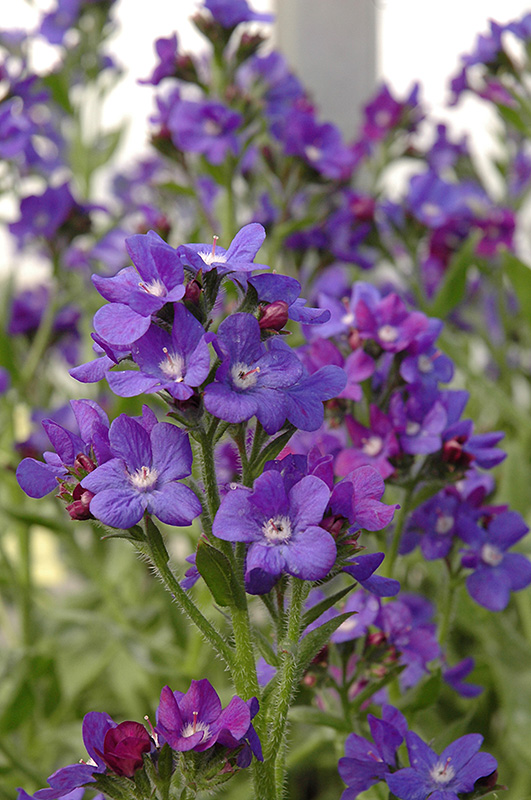>> Home
Loddon Royalist Anchusa
Anchusa azurea 'Loddon Royalist'
Height: 3 feet
Spread: 18 inches
Sunlight:
![]()
Hardiness Zone: 3
Other Names: Blue Bugloss, Alkanet, Italian Bugloss
Description:
True blues are hard to come by, but this is one of them, related to forget-me-nots and borage, makes a good substitute for floppier delphiniums; don't mulch the crown to prevent rotting, dead-head for re-blooming in summer
Ornamental Features
Loddon Royalist Anchusa is bathed in stunning cymes of blue flowers rising above the foliage from mid spring to early summer. The flowers are excellent for cutting. Its tomentose narrow leaves remain emerald green in colour throughout the season.
Landscape Attributes
Loddon Royalist Anchusa is an herbaceous perennial with an upright spreading habit of growth. Its medium texture blends into the garden, but can always be balanced by a couple of finer or coarser plants for an effective composition.
This is a relatively low maintenance plant, and should be cut back in late fall in preparation for winter. It is a good choice for attracting butterflies to your yard, but is not particularly attractive to deer who tend to leave it alone in favor of tastier treats. Gardeners should be aware of the following characteristic(s) that may warrant special consideration;
- Disease
Loddon Royalist Anchusa is recommended for the following landscape applications;
- Mass Planting
- Rock/Alpine Gardens
- Border Edging
- General Garden Use
- Groundcover
Planting & Growing
Loddon Royalist Anchusa will grow to be about 32 inches tall at maturity, with a spread of 18 inches. Its foliage tends to remain dense right to the ground, not requiring facer plants in front. It grows at a medium rate, and under ideal conditions can be expected to live for approximately 10 years. As an herbaceous perennial, this plant will usually die back to the crown each winter, and will regrow from the base each spring. Be careful not to disturb the crown in late winter when it may not be readily seen!
This plant should only be grown in full sunlight. It prefers dry to average moisture levels with very well-drained soil, and will often die in standing water. It is not particular as to soil type or pH. It is somewhat tolerant of urban pollution. This is a selected variety of a species not originally from North America. It can be propagated by cuttings; however, as a cultivated variety, be aware that it may be subject to certain restrictions or prohibitions on propagation.
